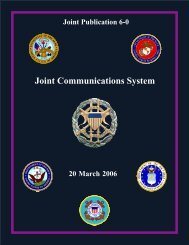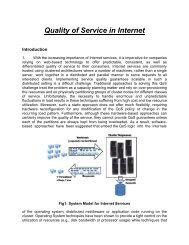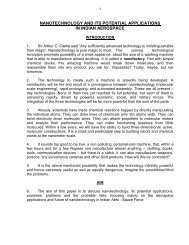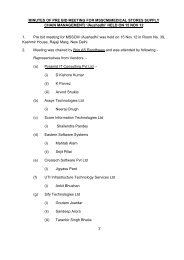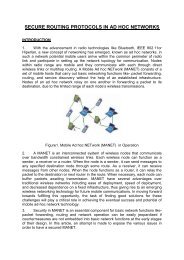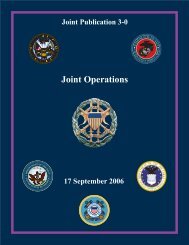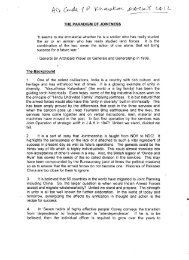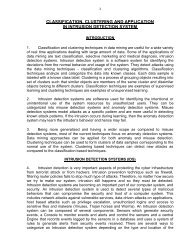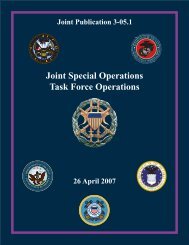Intrusion Detection Systems - Integrated Defence Staff
Intrusion Detection Systems - Integrated Defence Staff
Intrusion Detection Systems - Integrated Defence Staff
You also want an ePaper? Increase the reach of your titles
YUMPU automatically turns print PDFs into web optimized ePapers that Google loves.
57. Before an organization invests in security technologies, it must understand whichof its assets require protection and determine the real and perceived threats againstthose assets. We can characterize threats by the likely type of attack and attackercapabilities (that is, resources and goals) and the organization’s tolerance for loss of,damage to, or disclosure of protected assets. Attacker motives can be arbitrary(curiosity or vandalism) or targeted to meet a specific objective such as revenge orgaining a competitive advantage. Motives can make some forms of attack more likelythan others. Gaining a competitive advantage might require compromising specificinformation such as a marketing plan. Each form of attack requires diverse detectionstrategies. For example, information retrieval is likely to occur during a stealthy attack,while information corruption might require speed. Determining whether the potentialattacker is inside or outside the organization’s infrastructure affects the type andplacement of an IDS. Often, the most significant obstacle to an information securityimprovement initiative is lack of management support. Surveys conducted by securitytrade magazines cited lack of management support as one of the principle barriers toeffective information security. Security only becomes important when it impinges on theorganization’s high-priority interests and reputation. Deploying and operating an IDSrequires significant management support.Defense in Depth8. ID is only one aspect of a layered defensive posture or “defense in depth.”Defense in depth begins with the establishment of appropriate and effective securitypolicies. Effective policies help ensure that threats to critical assets are understood,managers and users are adequately trained, and actions to be taken when an intrusionis identified are defined. A good security policy puts ID in its proper perspective andcontext. Whenever possible, the policy should reflect the mission of the organizationthat promulgates it. Therefore, it should codify the rules governing enterprise operationsas they are reflected in its information infrastructure and should explicitly excludeactivities or operations not needed to support the enterprise’s mission. A missionorientedsecurity policy can aid in configuring both firewalls and IDSs. Establishing alayered security architecture is advantageous whether an IDS is deployed or not. Inaddition to formulating a security policy, the essential steps consist of implementinguser authentication and access controls, eliminating unnecessary services, applyingpatches to eliminate known vulnerabilities, deploying firewalls, using file integritychecking tools such as Tripwire, and so forth. Because most real-time commercial IDSsbase their detection approach on known attempts to exploit known vulnerabilities, anadministrator’s time is often better spent minimizing vulnerability through the applicationof patches or other security measures. Detecting and responding to penetrationattempts that cannot succeed (such as Unix-specific at attempts against a network of




